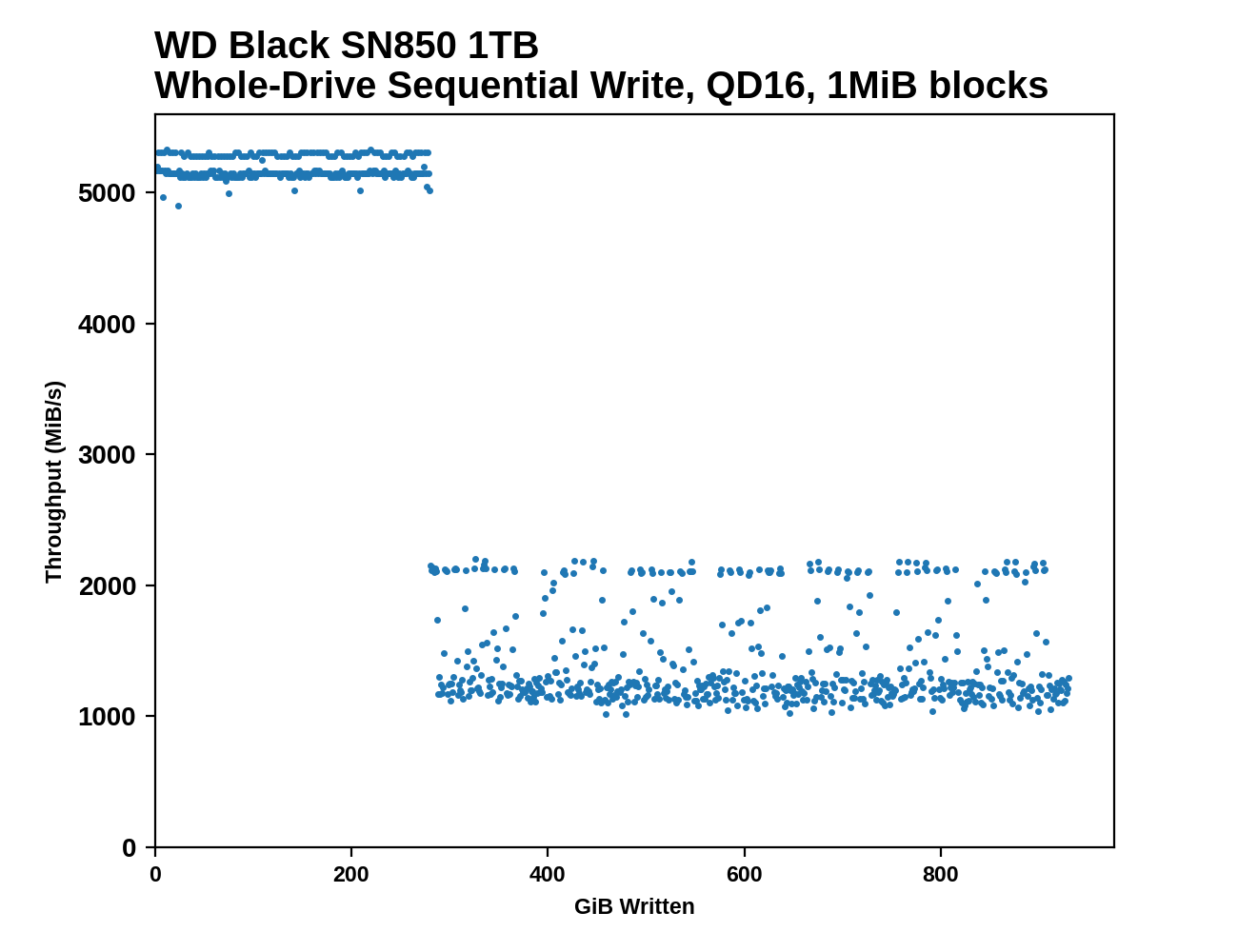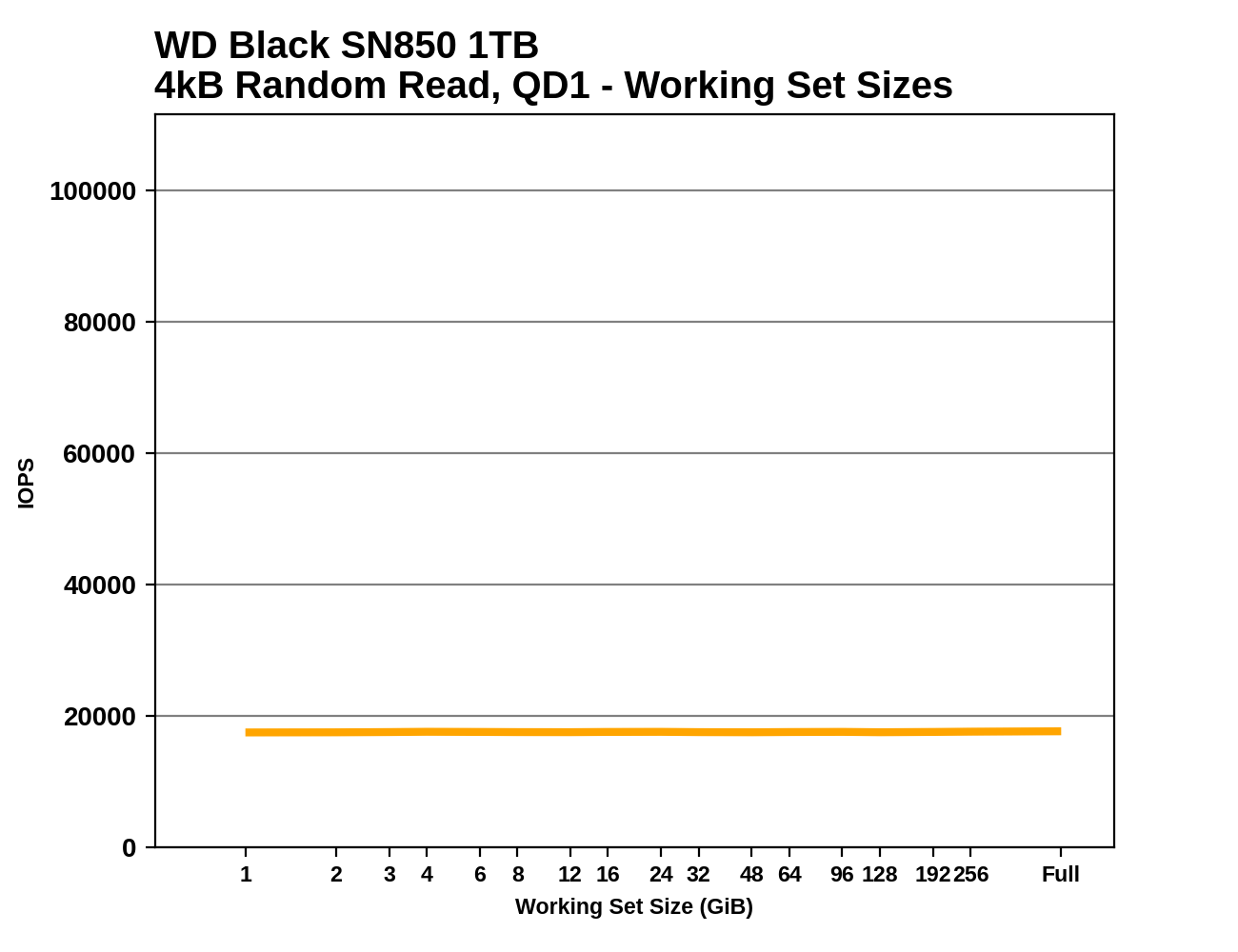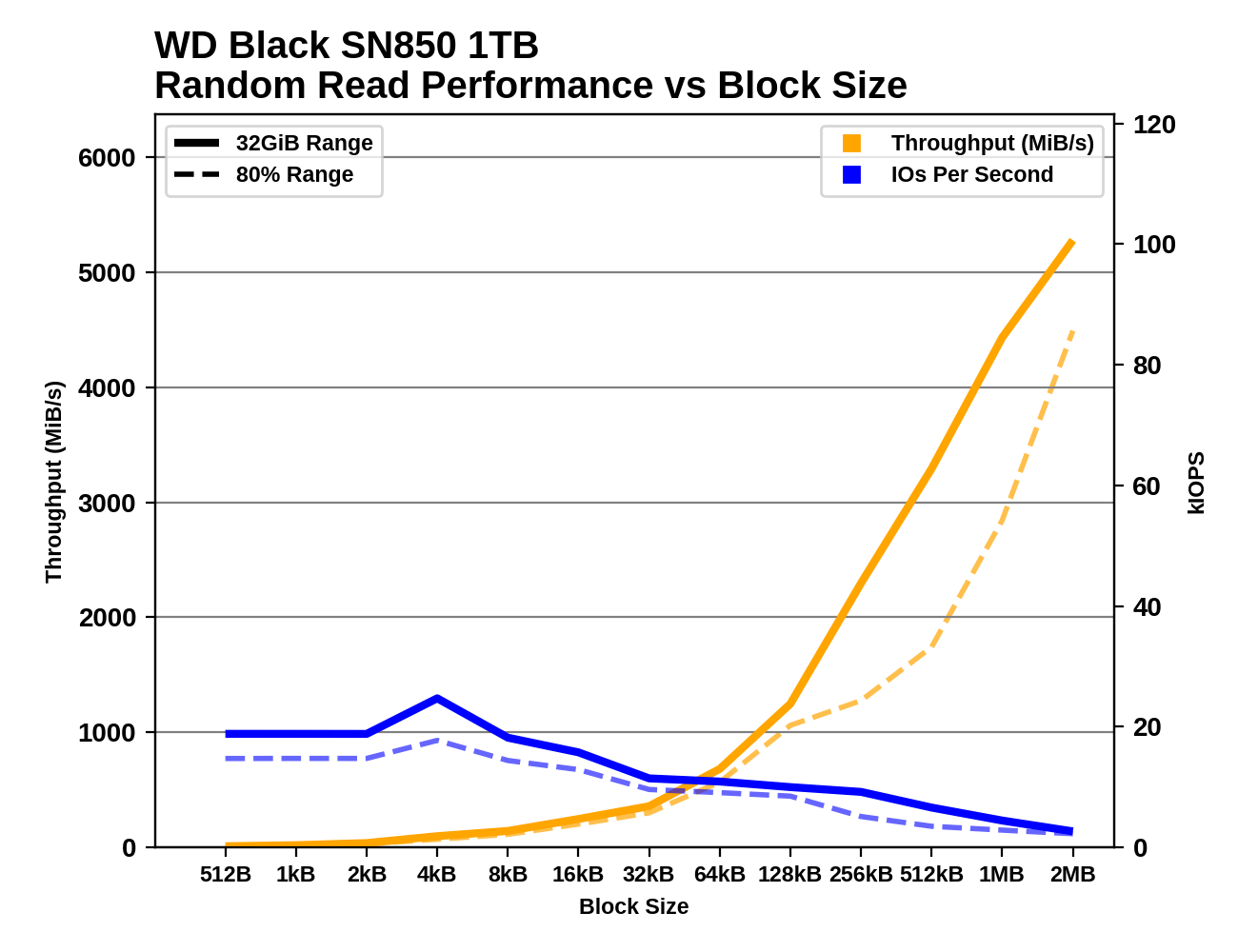The Western Digital WD Black SN850 Review: A Very Fast PCIe 4.0 SSD
by Billy Tallis on March 18, 2021 12:50 PM ESTAdvanced Synthetic Tests
Our benchmark suite includes a variety of tests that are less about replicating any real-world IO patterns, and more about exposing the inner workings of a drive with narrowly-focused tests. Many of these tests will show exaggerated differences between drives, and for the most part that should not be taken as a sign that one drive will be drastically faster for real-world usage. These tests are about satisfying curiosity, and are not good measures of overall drive performance. For more details, please see the overview of our 2021 Consumer SSD Benchmark Suite.
Whole-Drive Fill
 |
|||||||||
| Pass 1 | |||||||||
| Pass 2 | |||||||||
On the first pass starting from an empty drive, the WD Black SN850's SLC cache handles sequential writes at a bit over 5GB/s and the cache lasts for about 281GB before running out. That's a very large SLC cache size for a TLC drive, which is probably why performance is so variable after the cache is full. For the second pass of sequential writes, the cache size has been reduced to about 20GB, but the drive shows a second burst of 20GB of SLC-speed writes later in the test.
 |
|||||||||
| Average Throughput for last 16 GB | Overall Average Throughput | ||||||||
The aggressive SLC caching behavior on the SN850 comes at the cost of slower and less-consistent post-cache write performance, but Western Digital's earlier WD Black SSDs already behaved quite well here. The SN850 manages to keep write speed from ever dropping below 1GB/s, and the overall average across the entire drive fill is basically the same as the SN730, the OEM relative to the SN750 but with the same newer flash as the SN850.
On the second sequential write pass when the SN850's variable-size SLC cache is already at its smallest, post-cache performance is extremely consistent and faster than any other TLC SSD we have tested, but still 15% slower than the MLC-based Samsung 970 PRO.
Working Set Size
 |
|||||||||
Most high-end drives have boring and steady results on this test since they don't skimp on DRAM. The QD1 random read latency for the SN850 is better than any other TLC drive we've tested, and only 4% slower than the MLC-based Samsung 970 PRO.
Performance vs Block Size
 |
|||||||||
| Random Read | |||||||||
| Random Write | |||||||||
| Sequential Read | |||||||||
| Sequential Write | |||||||||
The WD Black SN850 is strongly optimized for 4kB IOs, with lower IOPS and throughput for sub-4kB block sizes on all four workloads. None of the other drives show such broad preferences for 4kB block sizes, but some of Western Digital's drives and a few others show this behavior on at least some of the workloads. This tuning pays off in some places, such as the SN850's leading random write performance for small block sizes (which is followed by the SLC cache running out while testing larger block random writes). There are some other weaknesses including poor performance for small-block sequential reads, but more importantly it has great performance for sequential reads with larger block sizes.










83 Comments
View All Comments
tech345 - Monday, April 19, 2021 - link
really it was great to use for everyonekensiko - Friday, April 30, 2021 - link
I'm pleased by the fact that you still include the Optane.PCIe 4.0 impresses but regarding endurance, 600TB is not impressive, so I'll keep my Optane for now. Too bad MLC is dead.
Wrathier - Monday, November 22, 2021 - link
I just bought one to use with my new Z690 build. Going to be awesome. I already have a 2TB Nvme m.2 Samsung 960 PRO I of course will keep as well, but will use this as "main drive". Seems awesome.